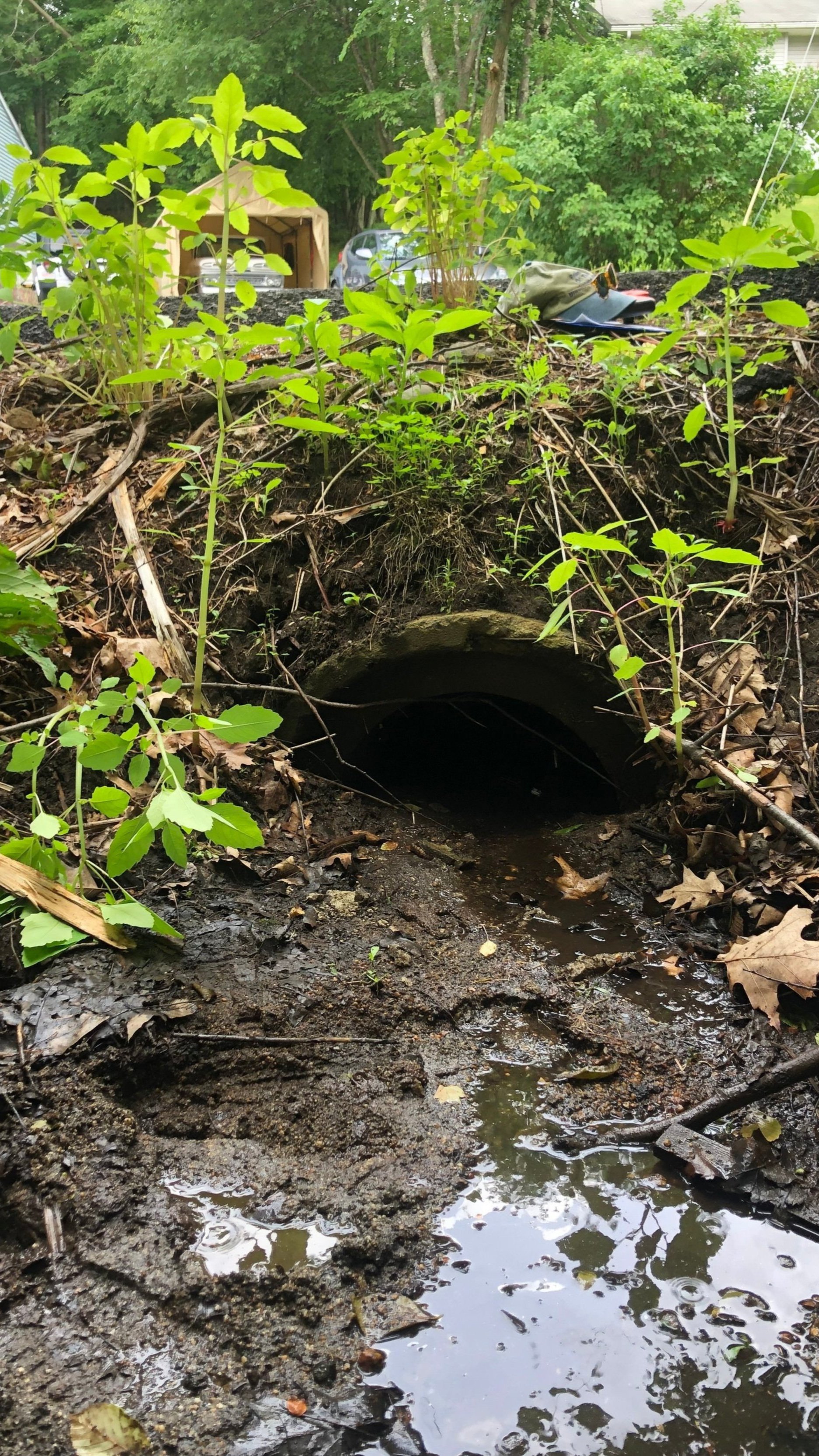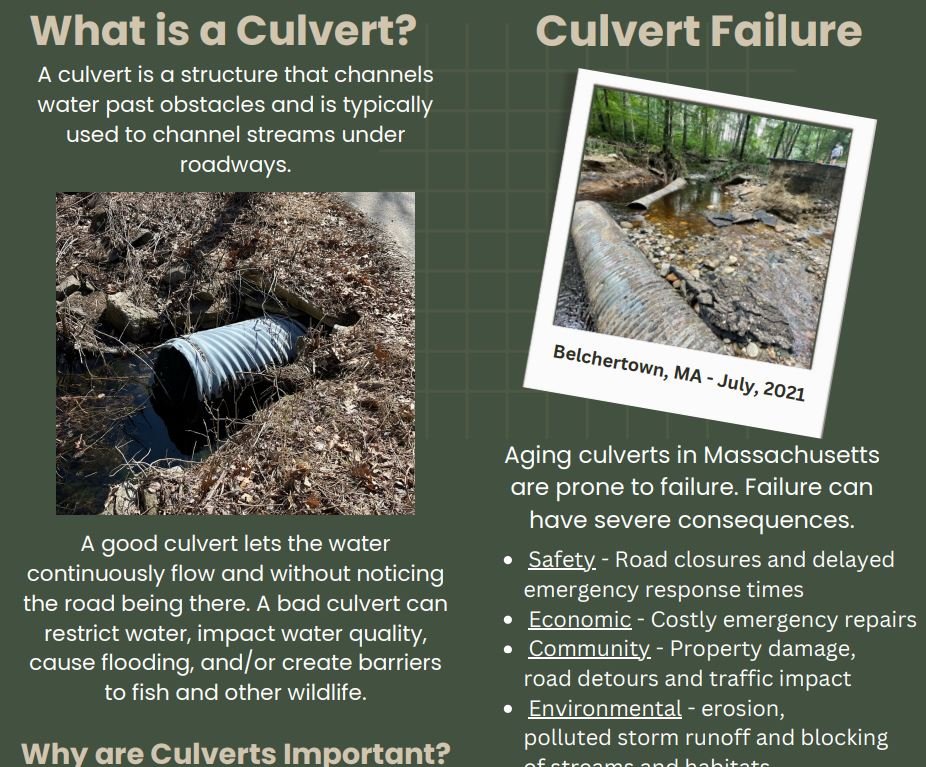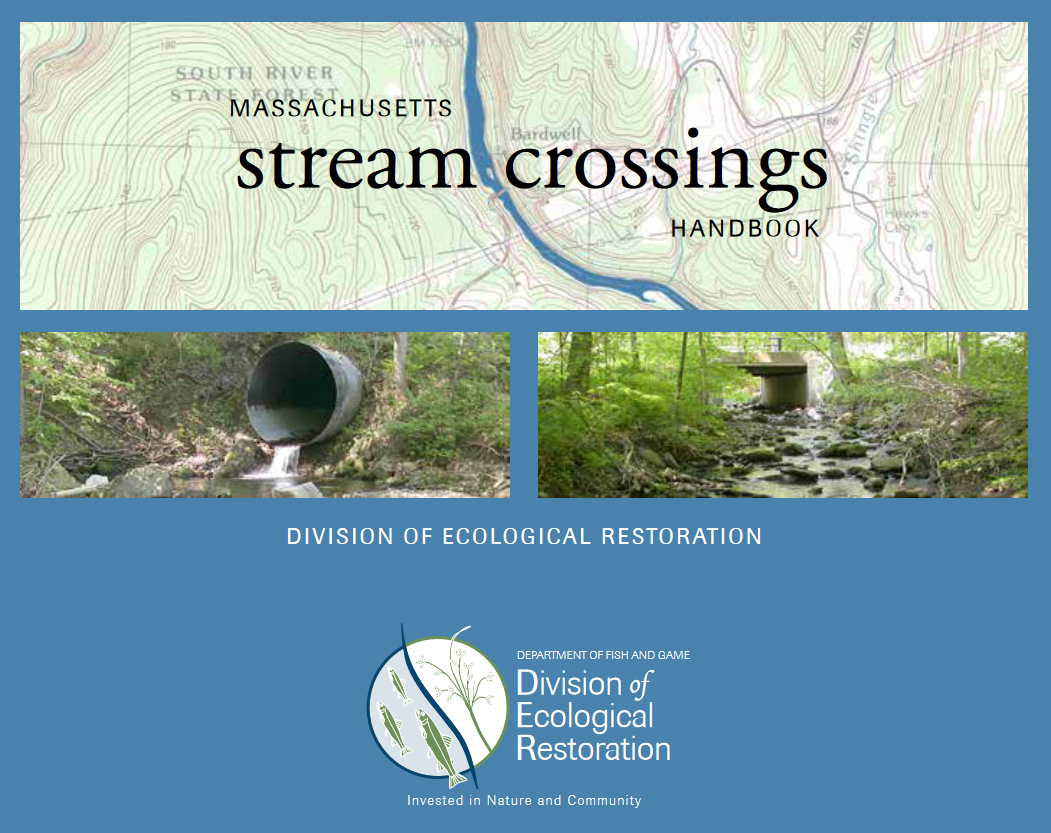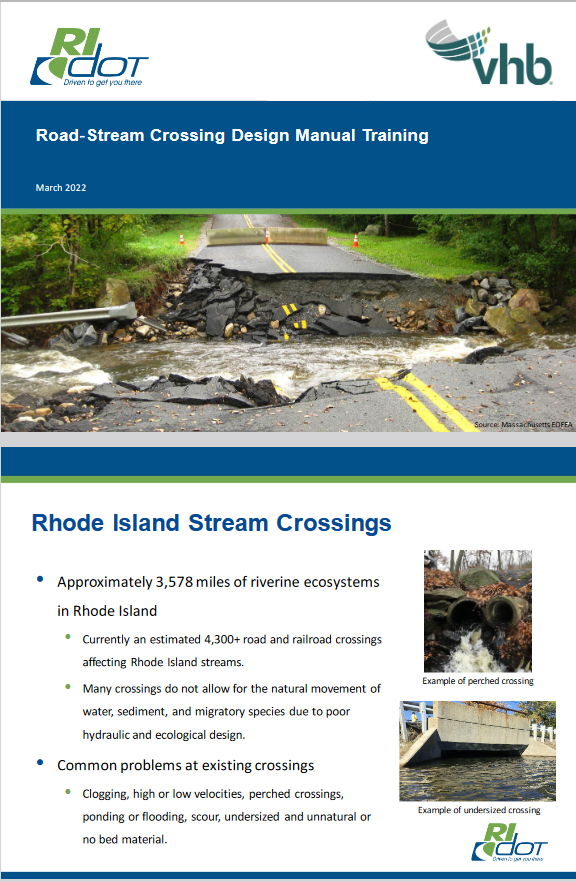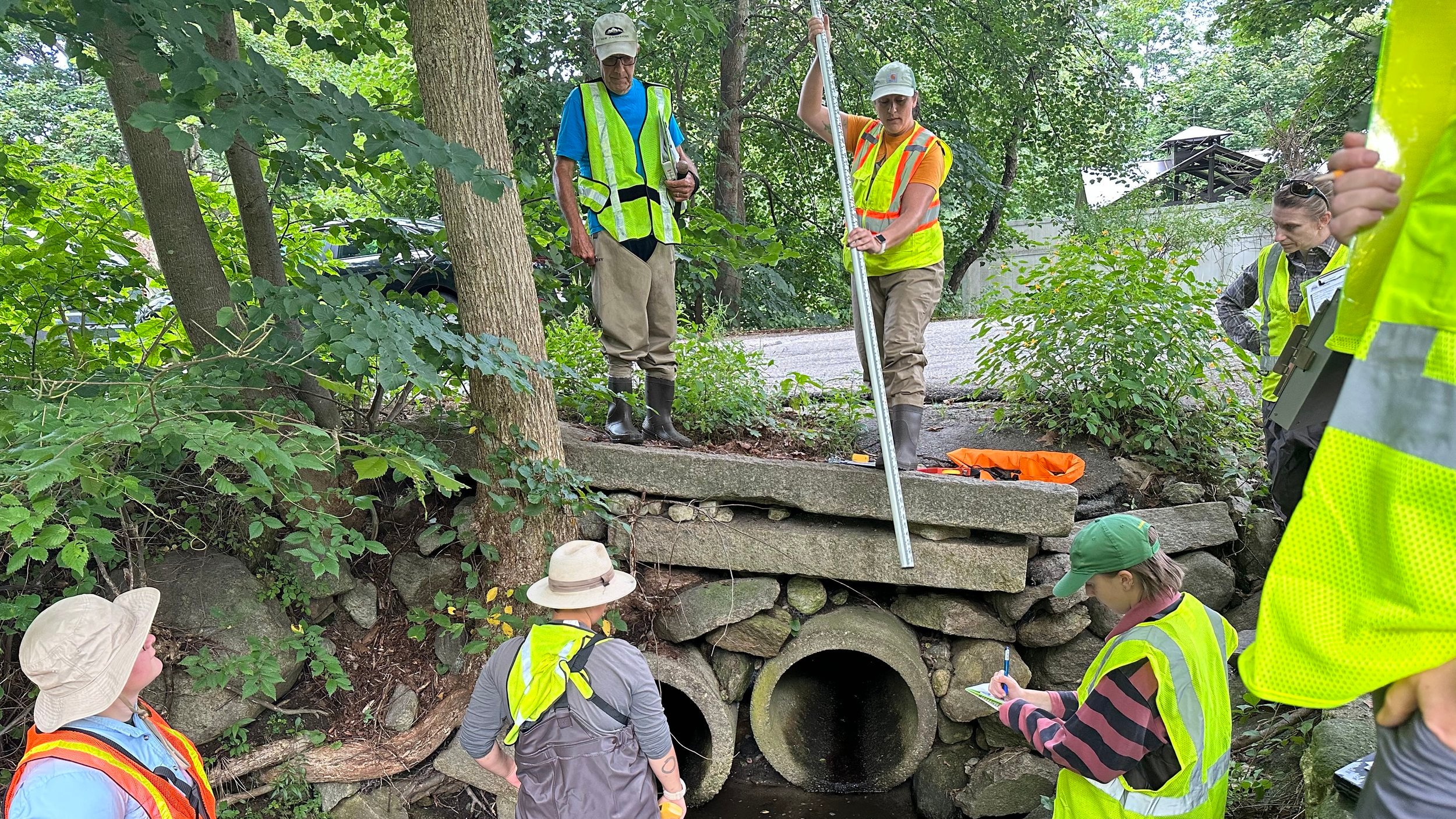
Culvert Assessment and Replacement
What is a culvert?
A culvert provides a way for water to pass under a roadway, such as a pipe or concrete box. These road/stream crossings ideally allow for the water to flow freely and unrestricted under the roadway.
However, many are undersized, clogged, or collapsed and instead create potential hazards to wildlife habitat connectivity, public safety, and climate resilience.
In the Blackstone, we don’t have enough certified “observers” collecting data on culvert conditions. We are working to increase awareness of what a culvert is, how to assess them, and how to prioritize and implement replacements to ensure that our watershed isn’t left behind in creating a healthy, safe, and resilient watershed for all.
Communities often identify culvert assessment and replacement is as a top priority in Municipal Vulnerability Preparedness (MVP) plans, including in Sutton and Northbridge Massachusetts.
Why should we care?
Environment
Properly sized culverts provide habitat connectivity for a variety of species, making the Blackstone a better place for biodiversity to flourish.
When culverts fail, there is risk of damage to infrastructure such as collapsed roadways. This can be both dangerous and expensive to repair.
Public Safety
Flooding and Climate Resilience
Updating old and undersized culverts will ensure we are prepared for the increased severe rainstorms we are experiencing due to climate change.
The Blackstone Collaborative assesses culverts using the standardized “Non-Tidal Aquatic Connectivity” protocol from the North Atlantic Aquatic Connectivity Collaborative (NAACC). NAACC’s goal is to improve aquatic connectivity and standardize road-stream-crossing data collection across a thirteen-state region, from Maine to West Virginia.
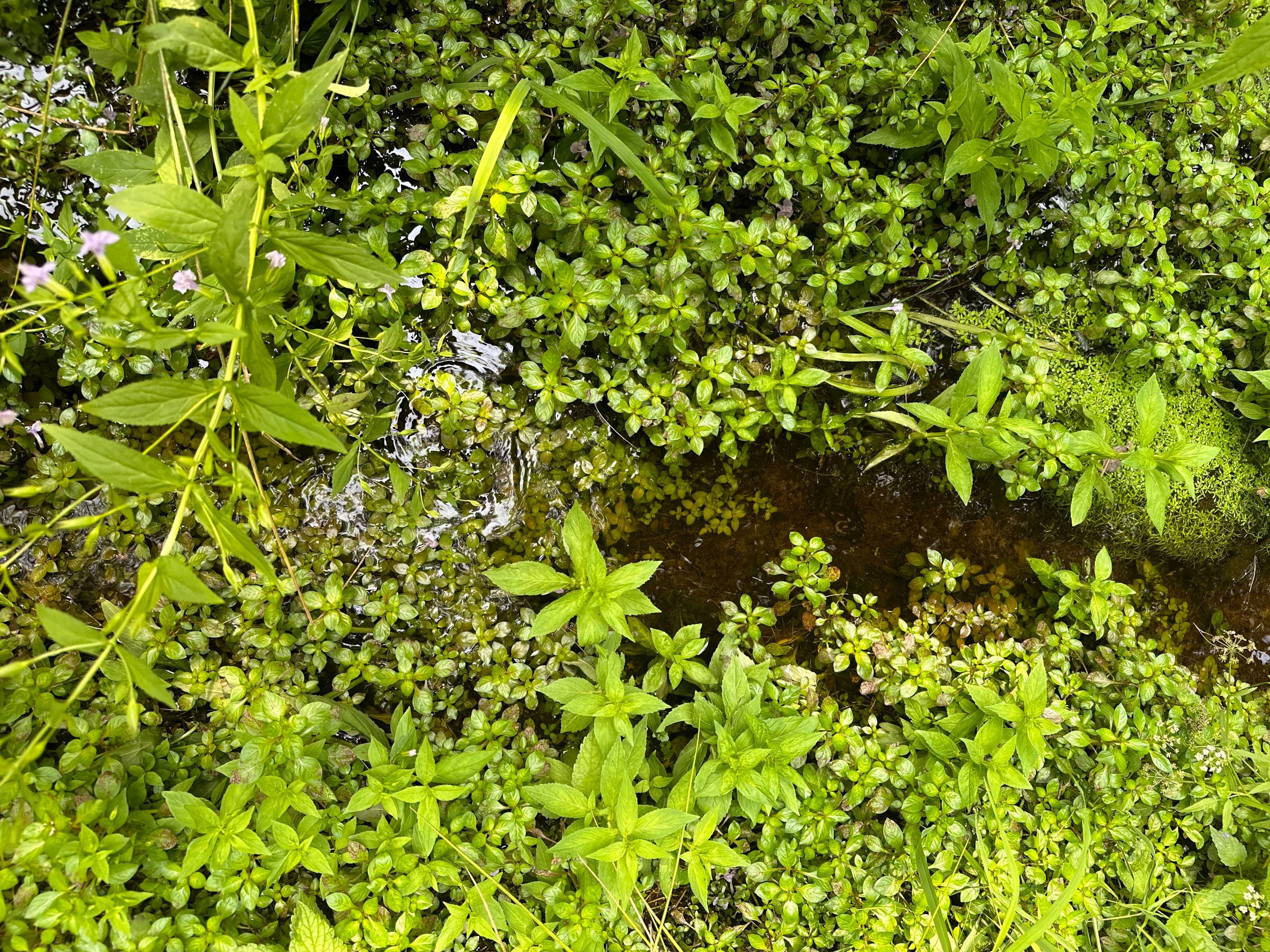
There are over 2,500 culverts in the Blackstone, and less than 300 have been assessed in the NAACC database.
Culverts come in all shapes, sizes, and conditions
Spacious culvert that nearly meets stream crossing standards
Clogged culvert that hinders connectivity

The Collaborative has certified 51 new Lead Observers in the NAACC Non-Tidal Aquatic Connectivity Protocol and collected data on over 160 culverts in the Blackstone in 2023 and 2024.
Interested in assessing culverts? We can help you get certified.
A “Lead Observer” is someone certified in the NAACC protocol to collect culvert data. Becoming a Lead Observer in the NAACC Protocol requires:
Watching a recorded online webinar
Participating in 2-3 in-person field days to shadow 20 culvert assessments by a “Coordinator” (someone certified to train others; both of our staff are Coordinators)
A final quiz to demonstrate proficiency
Your training Coordinator will add the new certified Lead Observer into the NAACC database
The Collaborative ran a Culvert Assessment Training in Fall 2023 in Northbridge and Sutton MA. We certified 14 new Lead Observers from three states and assessed about 100 culverts.
We will be hosting a training this summer - see our events page for more information, or reach out to sign up for our monthly news to hear about future events!
Resources to Learn More
Scott Jackson is a UMass Amherst Extension Professor in the Department of Environmental Conservation. He serves as a project leader for NAACC.



